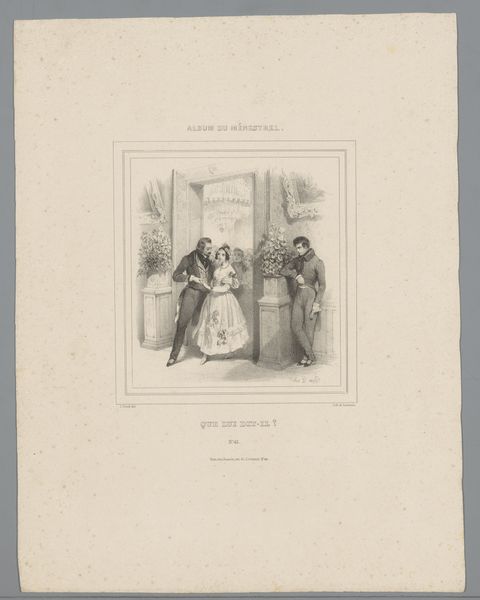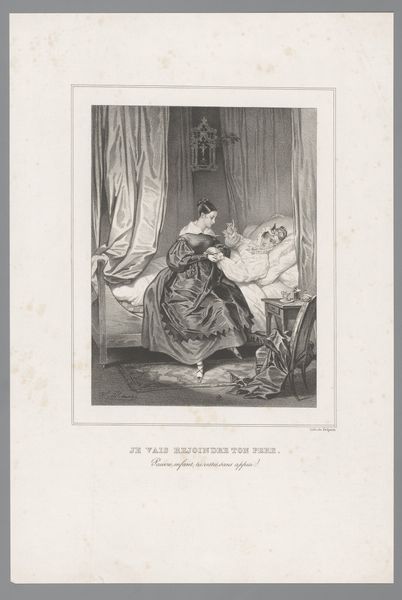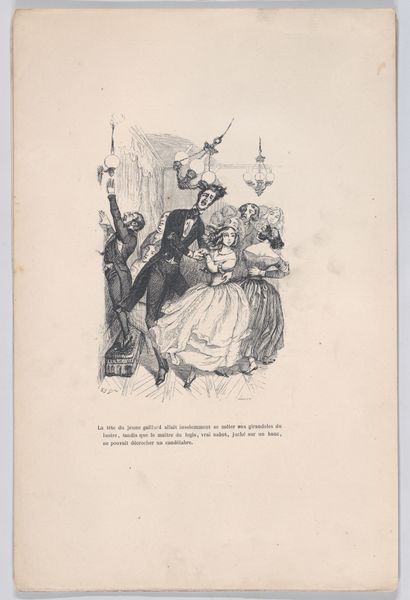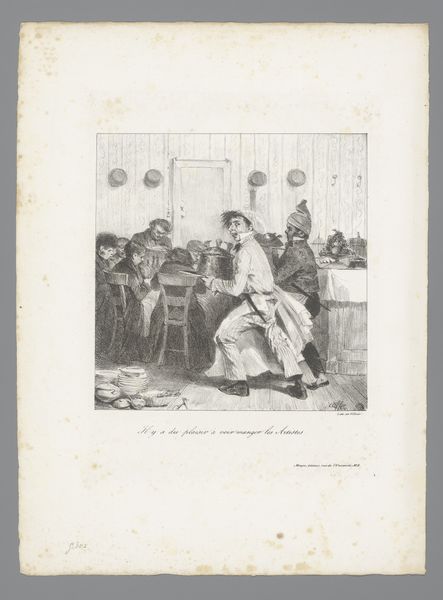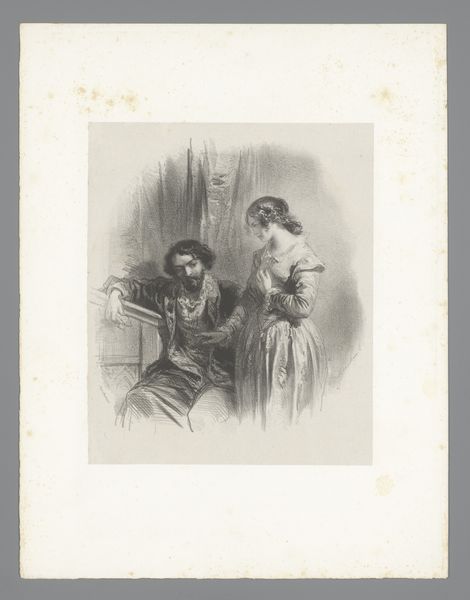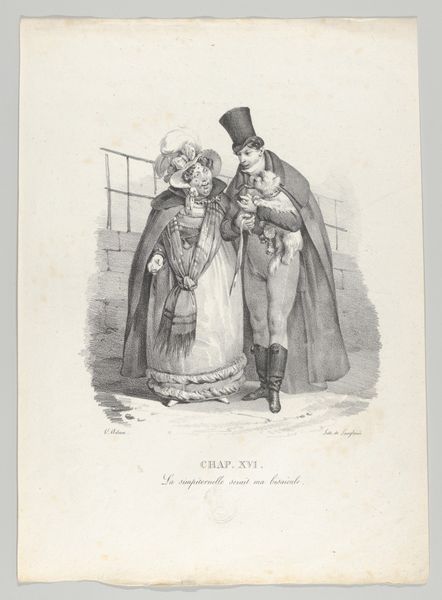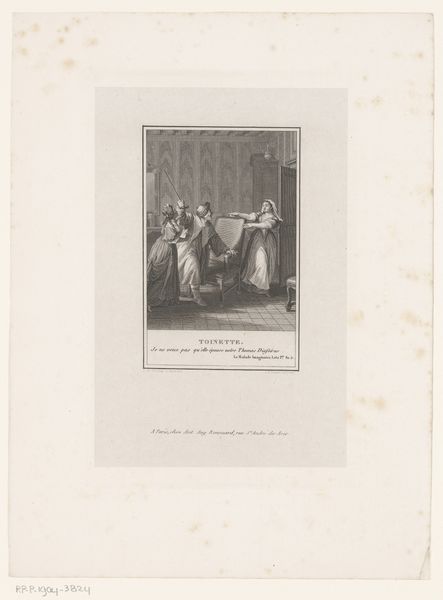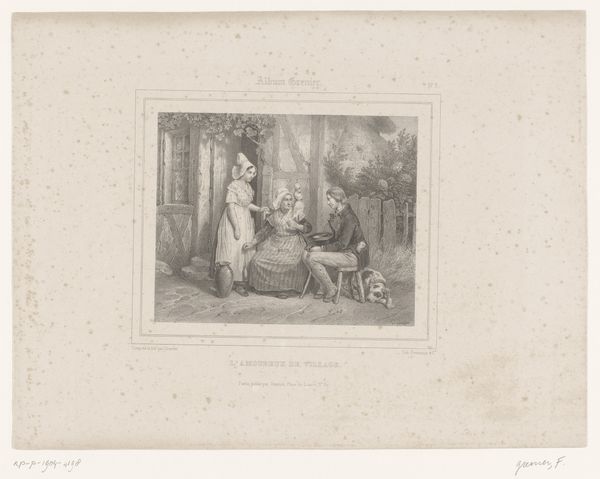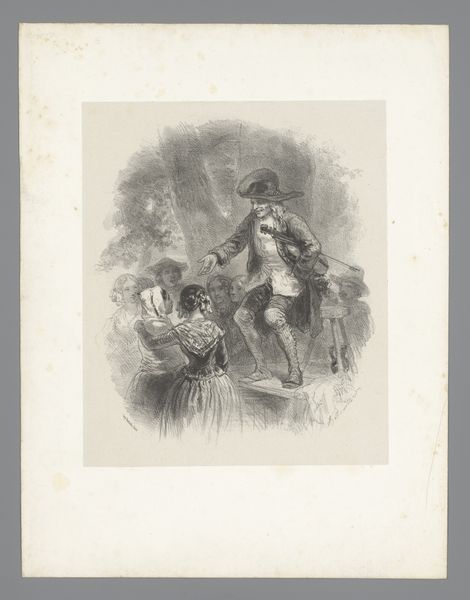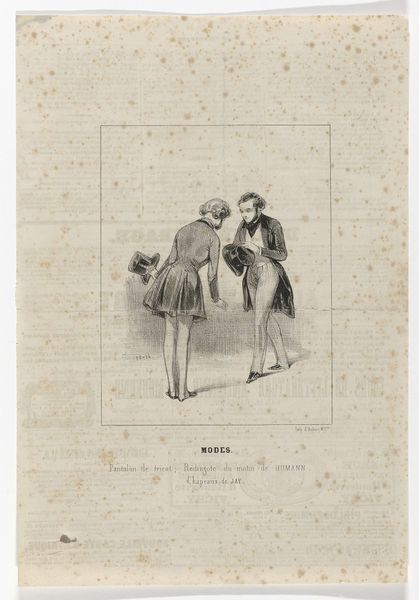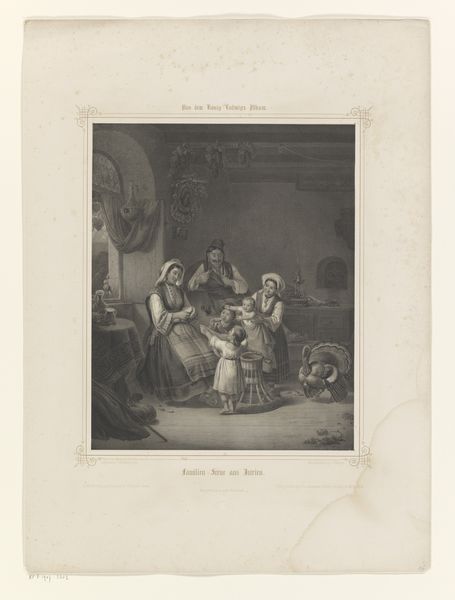
drawing, pen
#
portrait
#
drawing
#
narrative-art
#
romanticism
#
pen
#
watercolour illustration
#
genre-painting
#
watercolor
Dimensions: height 361 mm, width 271 mm
Copyright: Rijks Museum: Open Domain
Curator: Welcome. Here we see “Twee vrouwen en een soldaat in uniform” by Auguste Raffet, created sometime between 1825 and 1829. The work, rendered in pen and watercolor, is currently held at the Rijksmuseum. Editor: It's quite intimate, isn't it? A soldier, seemingly getting ready for duty, attended by two women in a domestic setting. The delicate watercolor adds to this sense of closeness. Curator: It evokes a sense of genre painting combined with elements of Romanticism. Consider the detail lavished on the soldier's uniform juxtaposed against the implied narrative between the three figures. We feel the domestic setting contrasted with military duties. Editor: I’m struck by the visible labor embedded in creating this watercolor and pen drawing. Raffet's meticulous layering of washes, combined with the fineness of the pen strokes…one appreciates how physical of an action it was to complete. Also, what sort of labor awaits him. Is the narrative also subtly asking us to consider military efforts and what kind of toil comes with warfare. Curator: Absolutely. Notice, too, the composition: the figures arranged almost like a tableau. One might read the female figures flanking the soldier as representing comfort and duty or as innocence contrasted with militarism, their subtle interaction heavy with allegorical potential. The portraits hung on the back wall act as further symbols representing memory and legacy. Editor: Thinking about the means of production again, and the labor of these figures, even that window frame serves as more than a geometric shape for leading the eye. What do they produce? Is this drawing commenting on gender roles and production? This feels especially potent, looking at his costume in high detail versus the female figures and more domestic objects within the room in softer lines. Curator: Yes, each element builds layers of significance. It makes you wonder about the narrative implications. We understand soldiers by their uniforms but how should we see their emotions? The text included below translates roughly to: “My faith, my dear! It’s only while the guard is standing, That you can steal a little nap." Are the implications playful or fraught with concern about departure? Editor: Looking at the materiality and seeing watercolor, I can't help but see its quick drying nature, which is reminiscent of quick action and labor and service. Also, what would this soldier have experienced being so close to conflict? Curator: Food for thought indeed! I hope this dialogue encourages a more profound exploration of the complexities in Raffet’s poignant and telling scene. Editor: Absolutely. It reminds us that even seemingly simple scenes can hold many layers of meaning when we consider their production, historical context, and human impact.
Comments
No comments
Be the first to comment and join the conversation on the ultimate creative platform.
